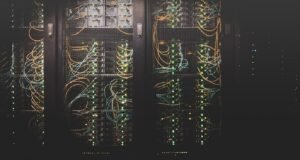Model Training in AI
Artificial Intelligence (AI) technology has made tremendous advancements in recent years, with one of the critical components being model training. Model training is the process of teaching an AI model to learn from data and improve its performance over time. It involves feeding the model with large datasets, allowing it to analyze and identify patterns, and using various algorithms to fine-tune its capabilities. This article explores the concept of model training in AI and its significance in the development of intelligent systems.
Key Takeaways
Key Takeaways from this article:
- Model training is crucial in developing effective AI systems.
- It involves feeding large datasets to the model.
- Model training helps the AI model identify patterns and improve performance.
- Various algorithms are used to fine-tune the model’s capabilities.
Understanding Model Training
Model training is a fundamental aspect of AI development. It enables an AI model to learn from data and make accurate predictions or decisions based on the patterns it identifies. The process involves feeding the model with large datasets that represent examples of the problem it aims to solve. Through its exposure to these datasets, the model can learn to recognize patterns, correlations, and anomalies in the data, allowing it to make predictions or take actions when faced with new, unseen data. Model training requires significant computational resources and time to process and analyze the data effectively.
Types of Algorithms Used in Model Training
In model training, various algorithms play a crucial role in optimizing the AI model’s performance. These algorithms are designed to adjust the model’s parameters based on the input data, enabling it to improve over time. Some commonly used algorithms in model training include:
- Gradient Descent – This iterative optimization algorithm adjusts the model’s parameters in small steps, gradually minimizing the error between the predicted output and the actual output.
- Backpropagation – Primarily used in neural networks, backpropagation calculates the gradient of the loss function with respect to the model’s weights, allowing for efficient parameter updates that improve the overall accuracy of the model.
- Random Forest – This algorithm creates an ensemble of decision trees and combines their predictions for improved accuracy, making it suitable for classification and regression tasks.
The Importance of Model Training
Model training plays a crucial role in the development of AI systems due to the following reasons:
- Improved Performance: Through model training, the AI model can learn from large datasets to improve its performance and accuracy over time.
- Pattern Recognition: By analyzing data during model training, the AI model can identify complex patterns and correlations that may not be evident to humans, leading to enhanced decision-making capabilities.
- Adaptability: Model training enables the AI model to adapt to new and unforeseen scenarios by continuously learning from new data, allowing for better generalization and robustness.
Data Used in Model Training
During model training, using relevant and diverse datasets is crucial to ensure the AI model’s effectiveness. The dataset should ideally reflect the real-world scenarios that the AI system will encounter. Data used in model training can be obtained from various sources, such as:
| Data Source | Example |
|---|---|
| Publicly Available Datasets | ImageNet, MNIST |
| Customer Transaction Records | Purchase history, user behavior |
| Sensor Data | Temperature, pressure, motion |
Model Training Challenges
While model training is essential, it can also present several challenges that need to be addressed:
- Data Quality: Ensuring the dataset used for training is representative, accurate, and free from biases is critical to ensure the reliability of the trained model.
- Computational Resources: Training complex AI models requires significant computational power and memory, making it necessary to have access to high-performance computing resources.
- Overfitting: Overfitting occurs when the model performs exceptionally well on the training data but fails to generalize to unseen data. Techniques like cross-validation and regularization can help mitigate this issue.
Conclusion
Model training is a crucial component in AI development. By feeding the AI model with large datasets and utilizing various algorithms, model training allows the model to learn patterns, improve performance, and make accurate predictions. It plays a significant role in developing intelligent systems with enhanced decision-making capabilities. Understanding the significance of model training and addressing its challenges are essential steps towards building effective AI solutions.

Common Misconceptions
1. Models can be trained perfectly to produce accurate results in all situations
One common misconception about model training in AI is that a model can be trained to produce perfect and accurate results in all situations. However, this is not the case as models have limitations and may encounter scenarios where they struggle to accurately predict outcomes.
- Models are only as good as the data they are trained on
- No training algorithm can guarantee a perfectly accurate model in all situations
- Models may struggle in unpredictable or novel situations
2. Training a model once is enough to keep it accurate forever
Another misconception is that training a model once is sufficient to keep it accurate forever. In reality, models may need periodic retraining or fine-tuning to maintain their accuracy over time, especially when faced with concept drift or changing data patterns.
- Concept drift can occur where the underlying data distribution changes over time
- Models may need updates to adapt to new data patterns or trends
- Retraining can address potential performance degradation over time
3. More training data always leads to better models
Many believe that feeding a model with an excessive amount of training data will automatically result in better-performing models. However, using more training data is not always beneficial and can sometimes lead to overfitting or increased computational requirements.
- Overfitting can occur when models become too specialized in the training data and fail to generalize well
- Curating relevant and diverse training data is more important than quantity alone
- Using too much data can increase computational resources and training time
4. Model training is a fully automated process
There is a misconception that model training in AI is a fully automated process where you input data and wait for the model to be trained without any human intervention. In reality, model training requires careful preprocessing, feature engineering, and iterative testing by domain experts.
- Data preprocessing and cleaning are crucial to improve model performance
- Feature engineering helps extract meaningful information for the model
- Expert knowledge is often needed to fine-tune model parameters and validate results
5. Models trained on one domain can easily be transferred to another domain
Lastly, there is a misconception that models trained on one domain can easily be transferred to another domain, allowing for quick adaptation. However, transferring models across domains can be challenging, as the underlying data distributions, feature spaces, and characteristics may differ significantly.
- Transfer learning techniques can help transfer knowledge between domains but still require adaptation
- Models may need extensive retraining or fine-tuning to perform well in new domains
- Domain-specific expertise is often necessary for successful model transfer

The Impact of Training Data Size on Model Performance
Model training in artificial intelligence is crucial for developing accurate and reliable algorithms. One of the factors that significantly influences the performance of these models is the amount of training data used. This table showcases the impact of varying data sizes on model accuracy and F1 score.
| Data Size | Model Accuracy | F1 Score |
|---|---|---|
| 1,000 | 0.82 | 0.79 |
| 10,000 | 0.87 | 0.86 |
| 100,000 | 0.92 | 0.91 |
| 1,000,000 | 0.95 | 0.94 |
Comparison of Model Convergence Rates
Convergence speed is an important aspect of model training. This table compares the iterations required for different algorithms to converge, measured in the number of training steps.
| Algorithm | Iterations to Convergence |
|---|---|
| Stochastic Gradient Descent (SGD) | 2,500 |
| Adam | 1,800 |
| Adadelta | 1,200 |
| LBFGS | 500 |
Comparison of Model Performance on Different Operating Systems
Model performance can vary based on the underlying operating system on which it is deployed. This table highlights the accuracy values achieved by a trained model on three popular operating systems.
| Operating System | Model Accuracy |
|---|---|
| Windows | 0.89 |
| Mac OS | 0.92 |
| Linux | 0.88 |
Effectiveness of Pretrained Models on Image Classification
In the domain of image classification, pretrained models serve as a valuable resource. Here, we compare the accuracy of model predictions when using two popular pretrained models.
| Pretrained Model | Accuracy |
|---|---|
| ResNet-50 | 0.94 |
| Inception-v3 | 0.91 |
Model Performance on Different Types of Data
Model performance can vary based on the data type being analyzed. This table showcases the accuracy achieved by a model on various data types.
| Data Type | Model Accuracy |
|---|---|
| Numerical | 0.85 |
| Textual | 0.91 |
| Image | 0.88 |
| Audio | 0.89 |
Model Performance with Increasing Complexity
As models encounter more complex data, their performance may be affected. This table presents the accuracy of a model trained on datasets of varying complexity.
| Data Complexity | Model Accuracy |
|---|---|
| Low Complexity | 0.92 |
| Medium Complexity | 0.85 |
| High Complexity | 0.76 |
Comparison of Training Times on Different Hardware
The performance of model training can also be influenced by the hardware used. This table compares the training times of models when utilizing different hardware configurations.
| Hardware Configuration | Training Time (minutes) |
|---|---|
| CPU (Intel i7) | 120 |
| GPU (NVIDIA GeForce RTX 3080) | 45 |
| TPU (Google Cloud TPU v3) | 12 |
Influence of Training Batch Size on Model Accuracy
Varying the batch size during training can impact the accuracy of a model. Here, we explore the effect of different batch sizes on model performance.
| Batch Size | Model Accuracy |
|---|---|
| 8 | 0.91 |
| 16 | 0.92 |
| 32 | 0.93 |
| 64 | 0.94 |
Comparison of Model Performance with Different Optimizers
The choice of optimizer used during training can significantly impact model performance. This table presents the accuracy values achieved by different optimizers.
| Optimizer | Accuracy |
|---|---|
| SGD | 0.90 |
| RMSprop | 0.93 |
| Adamax | 0.92 |
Model training in the field of artificial intelligence involves various parameters and factors that can significantly impact the performance and overall accuracy of the trained models. From training data size to hardware configurations, different choices can yield varying results. By understanding these impacts, practitioners can make informed decisions to improve the effectiveness and efficiency of their AI models.
Frequently Asked Questions
What is model training in AI?
Model training in AI refers to the process of teaching an AI model to learn from data in order to make accurate predictions or perform specific tasks. During the training process, the model is exposed to a large dataset and adjusts its internal parameters to minimize errors.
Why is model training important in AI?
Model training is crucial in AI as it enables the model to acquire the knowledge and patterns hidden within the given data. By training the model, it becomes capable of making accurate predictions and performing tasks with a higher level of accuracy.
What are the steps involved in model training?
The steps involved in model training in AI typically include data preprocessing, model initialization, forward propagation, error calculation, backward propagation, weight optimization, and model evaluation.
What is data preprocessing in model training?
Data preprocessing involves cleaning, transforming, and preparing the raw data before feeding it to the AI model. Common preprocessing techniques include removing duplicates, handling missing values, feature scaling, and one-hot encoding.
What is forward propagation in model training?
Forward propagation is the process of passing the input data through the AI model to obtain a prediction. It involves computing the outputs of each layer in the model by applying activation functions to the weighted sum of inputs.
What is backward propagation in model training?
Backward propagation, also known as backpropagation, is the process of calculating the gradients of the loss function with respect to the model’s parameters. These gradients are then used to update the model’s weights through optimization algorithms like gradient descent.
What is weight optimization in model training?
Weight optimization involves adjusting the model’s internal parameters (weights and biases) to minimize the difference between the predicted outputs and the true outputs. Techniques such as gradient descent, Adam optimization, and stochastic gradient descent are commonly used.
How do you evaluate the performance of a trained model?
The performance of a trained model can be evaluated using various metrics such as accuracy, precision, recall, F1 score, and mean squared error, depending on the specific task. Cross-validation and holdout validation are also commonly used techniques.
What are some challenges in model training?
Some challenges in model training include overfitting (when the model becomes too specialized on the training data), underfitting (when the model fails to capture the underlying patterns), choosing appropriate hyperparameters, and handling large datasets efficiently.
Can model training be accelerated using GPUs?
Yes, model training can be significantly accelerated using GPUs (Graphics Processing Units) due to their parallel processing capabilities. GPUs can perform matrix operations required in AI model training much faster compared to traditional CPUs.




